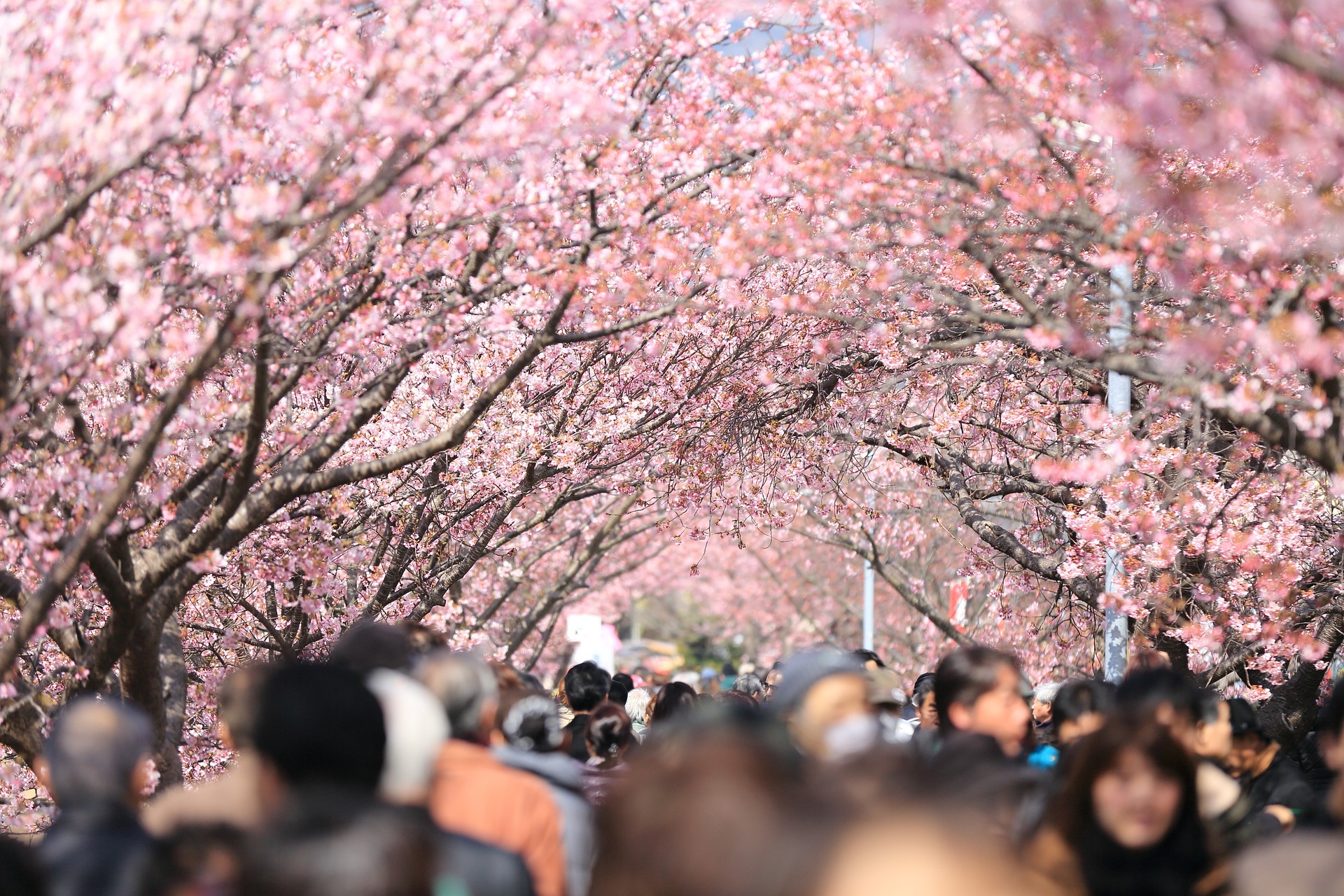Tokyo is a city that is largely associated with technological advances and cultural thrillseekers. The Japanese capital is certainly an expansive metropolis that acts as a haven for video gamers, robotics enthusiasts and culinary aficionados, but it also provides a number of opportunities to partake in one of Japanese culture’s favoured pastimes; the viewing of blooming Cherry Blossoms (sakura in Japanese). This period is known as Hanami season, or sometimes by the unofficial nickname of the Pink Tree Party.
The Hanami season unfolds throughout the country at different points, expected to reach Tokyo with the arrival of spring in late March. The season is currently expected to open on March the 21st, and peak bloom is anticipated for the 28th of the same month, though unfortunately the weather is not an exact science. Celebrated as the end of the cold winter months, the bloom of cherry blossoms is an event as these gorgeous flowers only last for around two weeks. This means that a great many Tokyo citizens and tourists will be packing picnics and stationing themselves in the city’s many public parks to watch these beautiful flowers bloom before their very eyes, snapping photos to enjoy all year around.
The planting of cherry blossom trees dates back to 1717, under the instruction of Tokugawa Yoshimune. The eighth shogun commanded that 100 of these aesthetically delightful trees were rooted, and the tradition has continued throughout the country ever since. Alongside the chrysanthemum, the cherry blossom is now considered the official flower of Japan, despite being native to the Himalayas.
Of course, Tokyo is a huge city. This means that there are an absolute multitude of places you can seek out to enjoy Hanami season. Shinjuku Gyoen is a 144-acre public park located just ten minutes from Shinjuku station, and hosts arguably the largest selection of blooms with well over a thousand varieties – fitting for imperial gardens that were formerly reserved for royalty. Best of all, some of these blooms arrive a little earlier and later than other territories of Tokyo, so if you miss the heart of the season you may still be able to enjoy the sight of the sakura here. It’s very difficult to find a quiet spot in Tokyo during Hanami season, but Shinjuku Gyoen is largely peaceful, even during the peak of the period – although the trade-off is that entrance fees are in operation.
If you’re looking for more of a party, Ueno Park is the place for you. Home to a number of tourist attractions, Ueno Park is one of the most popular open spaces in the entirety of Tokyo, and its blossoms typically open a few days before the rest of the city. If this is where you choose to take in the sakura you are well advised to arrive early to claim your spot and hold onto it throughout the day, as Ueno Park has a glorious night viewing display (Yozakura). If you find yourself unable to get to Ueno Park the smaller Yoyogi and Koganei Parks are also party spots packed with younger people.
If you’re keen to skip the picnicking and investigate Hamani season on the move, consider hiring a boat and paddling your way through the Chigorigafuchi Moat that surrounds the former Imperial Palace. You’ll need to be patient as the waits for a boat are lengthy (often stretching into multiple hours), but very much worthy of your perseverance; this is one of the most picturesque experiences in all of Tokyo, especially later in the season when petals float freely throughout the clear water. Trees are also lit up after sundown, making for a stunning sight. If you prefer to take a chance on a less busy spot for a similar experience, you can try the Meguro River or Sumida Park. Avoid taking a trip in the swan boat of Inokashira Park if you are on a romantic getaway however; a local legend claims that any couple that view the cherry blossoms from this vantage point are doomed to separate shortly afterwards.
Finally, there are a huge number of open spaces that you can enjoy a leisurely stroll around in Tokyo while taking in the sakura, though some will charge an entrance fee. Koishikawa Korakuen Gardens, Roppongi Sakarazuka, the Aoyama Cemetary and the Imperial Palace are among the most scenic, but cherry blossoms are genuinely citywide throughout the season.
Cherry blossom is also incorporated into Japanese cuisine during Hanami season. Flavourings are added to fast food and soft drinks throughout the country in addition to being sprinkled on top of takeaway coffees. Sakura is also pickled and used to create sweet snacks such as wagashi, anpan and sakuramochi. However, the leaves can be toxic is consumed without treatment, and remember that Hanami is a viewing season. Picking at the wild blossoms is very much a no-no, so content yourself with photographs and purchasing official confectionary from vendors.
Hanami season is a fascinating event, and considerably less sedate than you may expect a flower festival to be; the youth of Tokyo flock to sakura parties, creating a crowded and raucous atmosphere. If you are looking for a more placid experience, you could investigate Unemi, the viewing of plum blossoms, which tends to attract a slightly older crowd. Hanami season is a unique occasion, however, and a fascinating insight in an element of Japanese culture that may not be widely known throughout the west. As a result, it’s something that should be incorporated into the itinerary of any global traveller.


